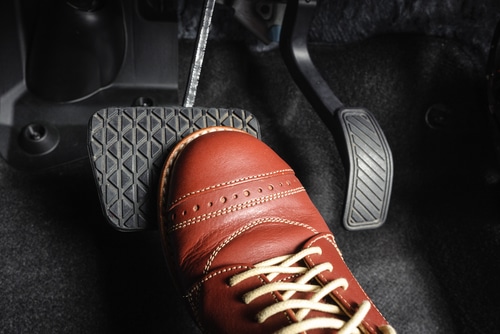Home » Blog » Car » Car Health & Safety » How to Pass an Australian Driving Test: Best Practical Tips
Categories
Tags
animal welfare
breed profile
buying a car
buying a pet
Car
car accessories
car care
car features
car insurance
Car safety
car sales
car service
cat
cat behaviour
cat body language
Cat Breeds
cat food
cat insurance
comprehensive car insurance
Dog
Dog Behaviour
dog body language
Dog Breeds
dog food
Dog Insurance
dog training
eco friendly cars
Kitten
New Car
pet accessories
pet activities
Pet Adoption
pet breeders
pet days of the year
pet fun stuff
Pet Health
pet insurance
pet parenting
Pet Safety
pet services
Puppy
rescue pets
road safety
road trip
safe driving
Recent Blog:
Facebook Posts
1 day ago
Growing old sometimes means we can’t take care of pets anymore. Find out some advice on what to do when this happens:![]()
![]() Senior Pet Parents – Contingency Plans for Your Pet – bit.ly/44bzwkS
... See MoreSee Less
Senior Pet Parents – Contingency Plans for Your Pet – bit.ly/44bzwkS
... See MoreSee Less
Senior Pet Parents' Contingency Plans for Pets
www.pd.com.au
Sometimes senior pet parents need more downtime. For older pet owners, this can be tricky to navigate if their dog or cat is full of beans and wants to3 days ago
Before you rev up the engine, let’s run through a checklist of things to do before starting your car. Not only do these steps ensure your safety (and that of others around you), but they also help in maintaining your vehicle's longevity.![]()
![]() Driving Tips: Your Checklist Before Starting Your Car -
... See MoreSee Less
Driving Tips: Your Checklist Before Starting Your Car -
... See MoreSee Less
Driving Tips: Your Checklist Before Starting Your Car
www.pd.com.au
Heading out for a drive? Hold up a second! Whether you're dashing off to work, running errands, or embarking on a road trip adventure, there are a few1 week ago
Are intestinal worms setting up camp in your dog’s gut without paying rent? Here’s how to spot the main culprits and get rid of them too:![]()
![]() Preventing, Identifying and Treating Intestinal Worms in Dogs - bit.ly/43YjCKu
... See MoreSee Less
Preventing, Identifying and Treating Intestinal Worms in Dogs - bit.ly/43YjCKu
... See MoreSee Less
Preventing, Identifying and Treating Intestinal Worms in Dogs
www.pd.com.au
Intestinal worms, such as roundworms in dogs are one of the least glamorous topics on the planet. These intestinal parasites that basically use our dogsAre you busily preparing for your driving test in Australia? Is your heart in your throat as you imagine hitting the road for your all-important driver knowledge test? Are you searching for the best driving tips to get through this unscathed and with your Ps in hand?
Whether you’re taking your driving licence test for the first time or attempting it again, it’s completely normal to feel anxious about doing a good job. The important thing is to not let your nervousness cloud your judgement on test day.
Here are a few of the best tips to pass with flying colours (within the speed limit, of course)!
A driving test in Australia: What you need to know
After getting your learner driver permit, to be eligible to take your driving test in Australia for your provisional licence you must first clock up some serious driving practice
All drivers under the age of 25 years must fill out a logbook with a minimum number of hours of supervised driving hours. Some of these hours must be completed at night. If you’re 25 years or older you’re not required to complete the learner logbook, however it’s recommended that you do.
The number of supervised hours that a learner is required to complete varies in each state and territory. Here’s a snapshot of most jurisdictions’ rules, but note this is for people aged under 25 years only. If you’re older you will likely have to do around half these hours or potentially less than that.
- In Queensland you must record 100 hours of supervised driving with 10 hours of night driving
- New South Wales learners are required to complete 120 hours including 20 hours of night driving
- In Australian Capital Territory you must record 100 hours and a minimum of 10 night time hours
- In South Australia a minimum of 75 hours of supervised driving is required, with at least 15 hours at night
- Learner drivers in Western Australia must record 50 hours with a minimum of 5 hours at night
- Tasmania road rules require a logbook of 80 hours including 15 hours of night driving

All learner drivers must pass the following conditions:
- Hold a valid learner permit
- Display L plates on the front and rear of the vehicle
- Always be accompanied by a person eligible to provide instruction while driving, including parking. This means someone who holds their full driver licence
- Have a zero Blood Alcohol Concentration (BAC)
- Not exceed the L-plater speed limit, which differs between states and territories
- You must pass a road rules test, which varies a little between each state and territory too
Calming anxiety before a driver knowledge test
It’s not unusual to feel nervous or stressed out while learning to drive. This may be amplified if your driving test is around the corner.
Here are a few tips to implement if you feel stressed while undertaking your driving practice:
- Pull over safely, stop the car and consider taking a short break to calm down.
- If the driving factors (e.g. wet road conditions) are making you feel uneasy, let your supervising driver take over.
- Remind yourself that a few mistakes will happen and that’s okay.
- Don’t be too hard on yourself, remember you will make progress.
- Talk to your supervising driver about what to do differently on the day of your test to avoid unnecessary stress.
Also consider using a professional driving instructor if you’ve been relying on family and friends to teach you to drive. They have tons of experience that should help ease you through the experience. They’ll also have some in-the-know tips on how to best manoeuvre your driving test in Australia (pun intended).
What does a driving test entail in Australia?
The practical driving assessment (PDA) consists of five sections and takes approximately 35 minutes. During three of the sections an assessor will give you directions to follow. You then have to do exercises in the remaining two sections. The exercises entail things that drivers generally have to do, such as park the car.
The assessor will observe and judge your performance based on a list of PDA items. You’ll be judged on whether you carry out the tasks as expected. Note you’ll receive little to no feedback as you carry these out – driving tips aren’t part of the test!
Once you complete the assessment and return to the PDA site, the assessor will let you know if you’ve passed or failed.
Always keep in mind that nobody’s perfect and, even if you pass, it’s the assessor’s job to let you know which areas of your driving weren’t up to standard. If you don’t pass the assessor will also explain which areas of your driving need to improve and will give you information on how you can improve before taking the PDA again.

What will the assessor look for during a driver knowledge test?
During your PDA the assessor will judge your performance against a list of seven items. There are some serious mistakes that can result in you automatically failing, such as disobeying a stop sign and not wearing a seatbelt.
Focus on these best practice driving tips for passing
When assessing your driving ability, the seven items on the PDA list are:
- Flow – how well you combine the driving skills you’ve learnt.
- Movement – how smoothly you drive the car back and forth.
- Path – the way you steer and how well you steer the car.
- Responsiveness – how aware you are of your surroundings and how you adjust to situations on the road.
- Look behind – how frequently you check your mirrors and blind spot.
- Signal – whether you use your indicators or hand signals to let other drivers know what you intend to do before you do it.
- Vehicle management – whether you can change gears, use the clutch and steering wheel correctly while keeping your eye on the road.
On a side note if you’re looking to buy tyres ahead of your test, we’ve got just the article for you. Also read our article on whether your car insurance is valid if your driver’s licence has expired. May as well plan ahead! Hopefully you have your upcoming driving test already in the bag.
Other general driving tips to help nail your test
Adequately prepare for your driving test as this will help make you feel more confident when the day arrives. If you’ve already done your required hours but feel you need more practice then listen to your gut. It takes a lot of energy to build up to a driver knowledge test – why not do your best to take it only once?
Also, speak to your driving supervisor about other factors that can help make your driving test less daunting. Here are five top driving tips for your big day:
- Use a car that’s familiar to you and that you’re comfortable driving.
- Practice driving along routes around the PDA site. Ensure you’re 100% across what each different road sign means.
- Ensure you’re 100% across what each different road sign means.
- Ditto with the traffic lights – what will you do on an orange light, for example?
- Choose gaps wisely; if you take too long to turn or change lanes too quickly you can have points deducted.

Consider car insurance for added peace of mind
There are no guarantees in life, which is why you should consider car insurance to provide a cushion in those unexpected situations. PD Insurance has three car insurance plans – comprehensive car insurance, third party property insurance and third party fire and theft car insurance to help protect your financial freedom.
Why not try us out?
Share On:




